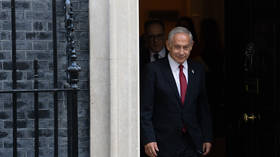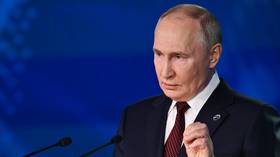Sakhalin 2 a milestone on the road to gas spot market and bypassing transit prob
Sakhalin-2 wont be the last Gazprom LNG project, with the company planning further LNG developments. This will allow it to reduce dependence on transit countries, and cash in on the growing gas spot market.
Put one LNG plant on line – and think about the second. Just a day after Gazprom launched LNG production in Sakhalin – it announced it's in talks with Shell and Mitsui to create new LNG production capacity in the Yamal region. This echoes President Medvedev's plan to reduce Russia's dependence on transit countries.
“This market is feeling the pressure of the global financial crisis. Competition is getting tougher. At the same time Russia's dependence on transit countries is higher than we want it to be. We need new energy corridors that are not linked with transit.”.
Experts say LNG will revolutionise the global energy trade, creating a truly free spot market for gas. So far the gas trade has been based largely on long-term contracts, with more than 2/3 of the liquefied gas from Sakhalin already reserved by Japan and South Korea, but the spot market is becoming more attractive.
Gazprom’s CEO, Aleksey Miller, says the company is working on all European gas trading platforms and plans to test other spot markets.
“The volume of our operations on the spot market for the last four years has increased 8 times, reaching 25 billion cubic meters of gas. Gazprom is trading on spot market in Europe and is going to test the water in North America.”
However, Ilya Balabanovsky, Oil and Gas Analyst at Unicredit Securities, says that leaves about 10% to be sold on the spot market or to cover unexpected shortages in case of pipeline interruptions.
“That's the part of the overall volume that is theoretically supposed to go to the U.S. West coast or to Mexico, or if the price is high enough, to anywhere else in the world. LNG is the only way to fulfill extra demand if something happens, for example if a pipeline gets blown up or if the Ukrainian situation plays up again.”
Tatiana Mitrova, Head of the Centre for International Energy Markets Studies, says Russia's geographic location gives it an advantage in supplying gas to the most profitable markets, more quickly than other producers.
“Even from Sakhalin to the western coast of the United States, its also shorter than from Middle eastern producers, or from Indonesia or Malaysia. It gives the possibility to more quickly transport gas to the market, and to more quickly get additional profits in a period of high prices.”
Today LNG producers sell only 10% of total exports on the spot market. But experts say this figure may change significantly by 2020. When energy consumption begins to rise, as the global economy recovers, gas producers may trade a quarter of exported LNG on the spot market.












